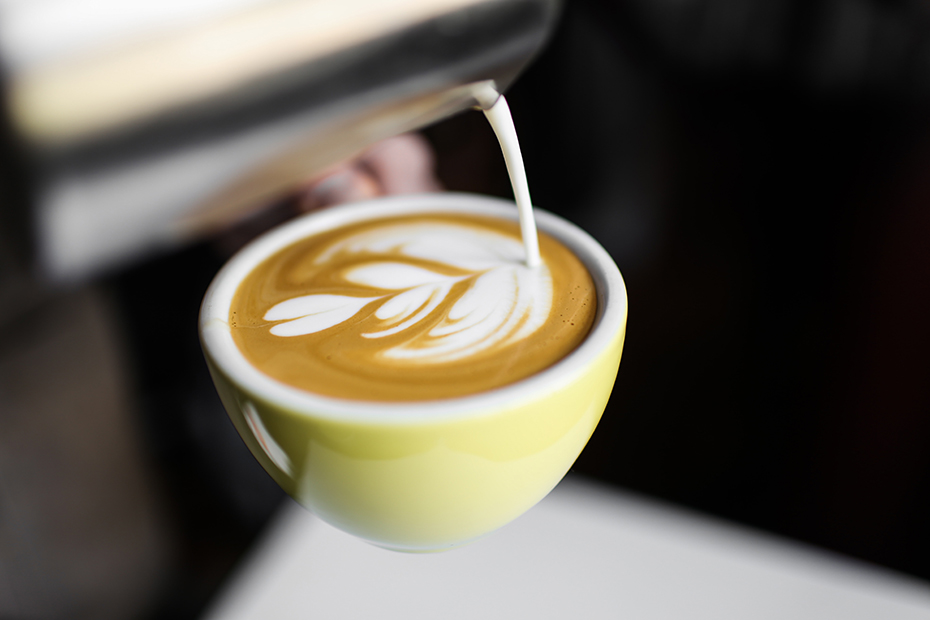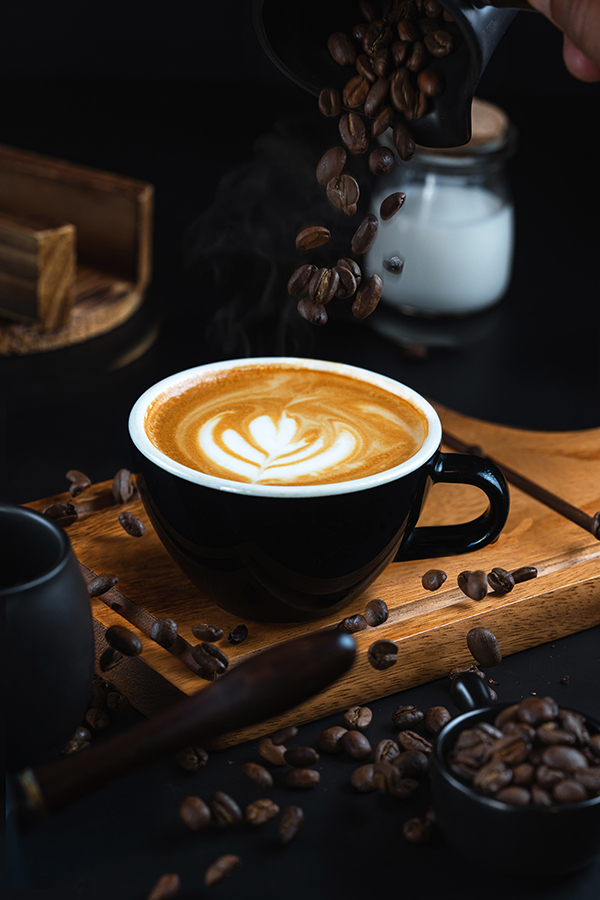Latte Art is an enchanting fusion of culinary skill and visual creativity. It’s the practice of creating designs in the foam of a latte, a coffee drink made with espresso and steamed milk.
This art form has become a signature of modern coffee culture, transforming a simple cup of coffee into a canvas for baristas worldwide.
We will now give you an insight into Latte Art which is at the intersection of espresso brewing and creativity.
| Key Takeaways | |
|---|---|
| 1 | Latte art is a blend of espresso brewing and creativity, transforming a simple coffee drink into a work of art. |
| 2 | The quality of the espresso shot is crucial for latte art. A well-brewed espresso provides the necessary contrast and texture for the milk froth. |
| 3 | Milk frothing is an essential technique in latte art. The right frothing creates a creamy, velvety texture that allows the milk to pour smoothly and hold its shape when creating designs. |
| 4 | There are various latte art designs, each with its own meaning. From hearts and rosettas to tulips, these designs showcase the skill and artistry of the barista. |
| 5 | Anyone can learn to create latte art at home with practice, the right tools, and a bit of patience. |
The Importance of Espresso in Latte Art
The heart of any latte art is the espresso. A well-brewed shot of espresso is crucial for creating the perfect base for latte art. The rich, dark liquid provides the contrast needed to make the designs stand out against the creamy froth.

The Role of Creativity in Latte Art
Creativity plays a significant role in latte art. It’s not just about pouring steamed milk into espresso; it’s about manipulating the milk to create intricate designs. From hearts and leaves to more complex patterns, the possibilities are endless. The artistry in this process makes each latte unique and personal.
Understanding Espresso
Espresso is a really concentrated form of coffee which is brewed under pressure. It’s characterized by its strong flavor and thick consistency, topped with a layer of crema. The quality of the espresso shot is crucial in latte art as it forms the base of the drink.

The Science Behind Espresso Brewing
Brewing a perfect shot of espresso is both an art and a science. It involves carefully measuring the coffee grounds, tamping them to the right density, and then forcing hot water through the grounds at a precise pressure. The result is a very concentrated shot of coffee with a rich flavor and a velvety layer of crema.
The Impact of Espresso Quality on Latte Art
The quality of the espresso has a direct impact on the latte art. A well-brewed espresso shot provides a solid base for the milk, allowing the froth to float on top and form designs. If the espresso shot is weak or watery, it can disrupt the milk’s texture, making it difficult to create clear, distinct designs. Therefore, mastering the art of espresso brewing is essential for any aspiring latte artist.
The Basics of Milk Frothing
Milk frothing is a crucial step in creating latte art. It involves heating and aerating milk to create a creamy, velvety texture. The goal is to balance the liquid and the foam, allowing the milk to pour smoothly and hold its shape when creating designs.
Techniques for Creating Latte Art
Creating latte art involves a combination of pouring techniques and milk manipulation. Here are some basic steps:
- Start with a well-brewed shot of espresso in a cup.
- Froth the milk to the right consistency.
- Pour the milk into the espresso, starting from a high point and lowering the pitcher as you pour.
- Move the pitcher from side to side as the cup fills to create a pattern.
- Finally, pull the pitcher through the pattern to create a design.
There are many techniques to learn, from the basic heart and rosetta to more complex designs. Practice is vital to mastering these techniques.
Common Latte Art Designs and Their Meanings
Latte art designs can range from simple to complex, each with its own meaning:
- Heart: Represents love and is often seen as a barista’s signature.
- Rosetta: Resembles a fern or leaf and symbolizes skill and artistry.
- Tulip: Indicates layers of skill and is often a sign of a more experienced barista.
How Espresso Brewing and Creativity Come Together in Latte Art
Espresso brewing and creativity intersect beautifully in latte art. The science of brewing the perfect espresso shot provides the canvas, while the creativity of the barista brings the art to life.
This combination of technical skill and artistic expression makes latte art so captivating. For more on this, check out these Innovative Latte Art Designs.
The Role of Innovation in Latte Art
Innovation plays a significant role in latte art. As baristas continue to push the boundaries of what’s possible with milk and espresso, new designs and techniques are constantly emerging. This constant evolution keeps the art form fresh and exciting and showcases the limitless potential of creativity in coffee.
Final Thoughts
To conclude, latte art is a captivating blend of espresso brewing and creativity. It’s a testament to the skill and artistry of baristas, transforming a simple coffee drink into a work of art.
Whether you’re a coffee enthusiast looking to learn a new skill or simply someone who appreciates the beauty of latte art, there’s no denying the charm and appeal of this unique art form.
FAQs
Q: Can I create latte art with regular coffee?
A: Latte art is typically created with espresso due to its rich, concentrated flavor and texture. Regular coffee may not provide the necessary contrast or texture for the milk froth.
Q: What kind of milk is best for latte art?
A: Full-fat milk is often recommended for latte art as it froths better and creates a smoother, creamier texture. However, other types of milk can also be used with the right technique.
Q: How do I make my espresso shots better for latte art?
A: The quality of your espresso shot is crucial. Ensure you’re using fresh coffee beans, grind them just before brewing, and use the right amount of water and pressure.
Q: Can I learn latte art at home?
A: Absolutely! With practice, the right tools, and patience, you can learn to create beautiful latte art at home.

Written by Robbie – Coffee Writer and Researcher at MyCoffeeBeanz.com
Robbie has over 15 years of extensive experience working in the coffee industry in marketing. As a native New Yorker he loves the hustle and bustle of a big city and enjoys nothing more than breaking up his busy day with trips to the nearest coffee shop for a double espresso. Find out more about Robbie
